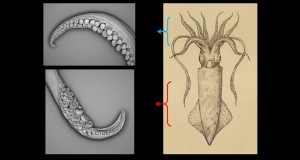What medicine can learn from squid teeth
 Many types of squid have razor-sharp teeth. They just are not where you’d expect to find them. Each of the suckers that run along a squid’s tentacles hides a ring of teeth. Those teeth prevent the animal’s prey from swimming away. They also are more than just a curiosity. Scientists want to create squid-inspired materials that will be just as strong as these barbs. Data from a new study may help them do that.
Many types of squid have razor-sharp teeth. They just are not where you’d expect to find them. Each of the suckers that run along a squid’s tentacles hides a ring of teeth. Those teeth prevent the animal’s prey from swimming away. They also are more than just a curiosity. Scientists want to create squid-inspired materials that will be just as strong as these barbs. Data from a new study may help them do that.
Before they could start designing the new materials, scientists had to understand what makes squid teeth so strong. Some have launched such work by focusing on the large molecules — suckerin proteins — that make up the teeth.
Akshita Kumar is a graduate student at Nanyang Technological University in Singapore. Along with researchers at A*STAR’s Bioinformatics Institute, also in Singapore, her group has identified dozens of suckerin proteins. They form strong, stretchy structures, called beta-sheets, Kumar’s team reports. (These structures also make spider silk strong and stretchy.) The new data show that these squid proteins are thermoplastic. That means they melt when heated and then turn solid again when cooled.
Read more at Science News for Students, here.
Image: James Weaver